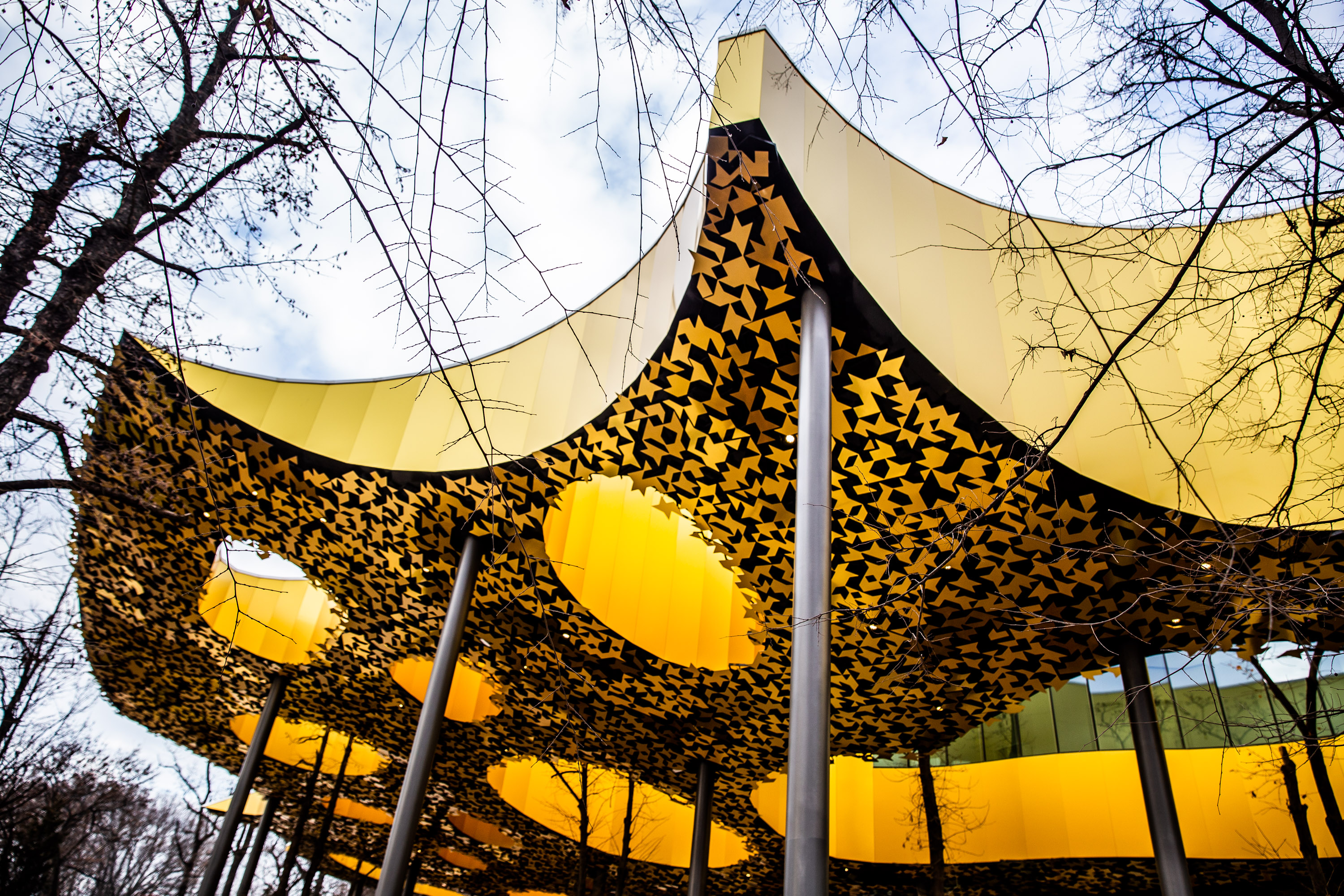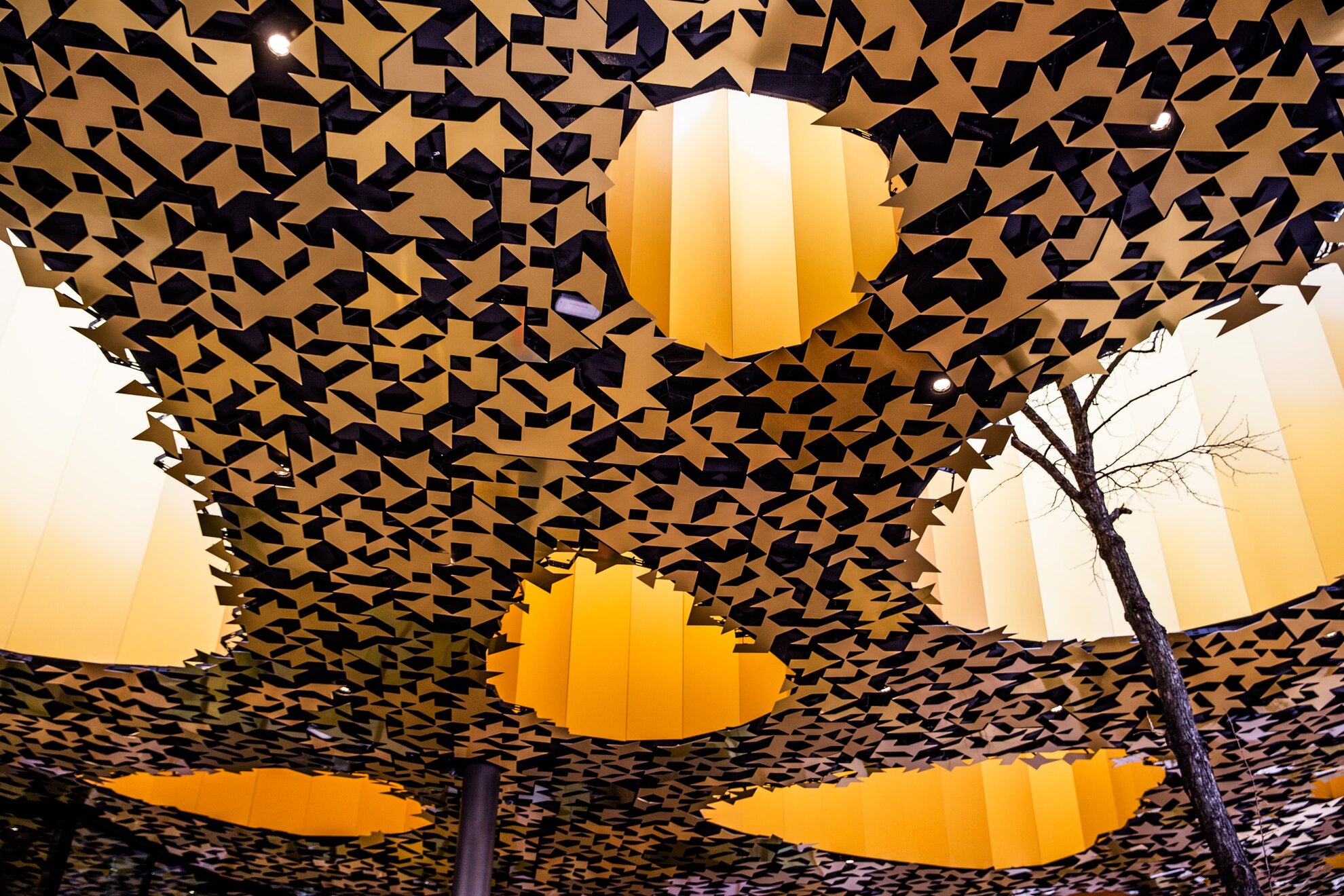
While still controversial, the Liget Budapest Project aimed at transforming Budapest’s most revered expanse of recreational greenery, City Park, has given rise to a number of positive developments. These include the Mihály Mőcsényi Botanical Garden, the renovated Olof Palme House, the Garden of the Blind and... the House of Hungarian Music. Its extravagant form plays with the harmony of nature, its organic ripples exciting the visitor's imagination.
Gold leaves and shafts of light
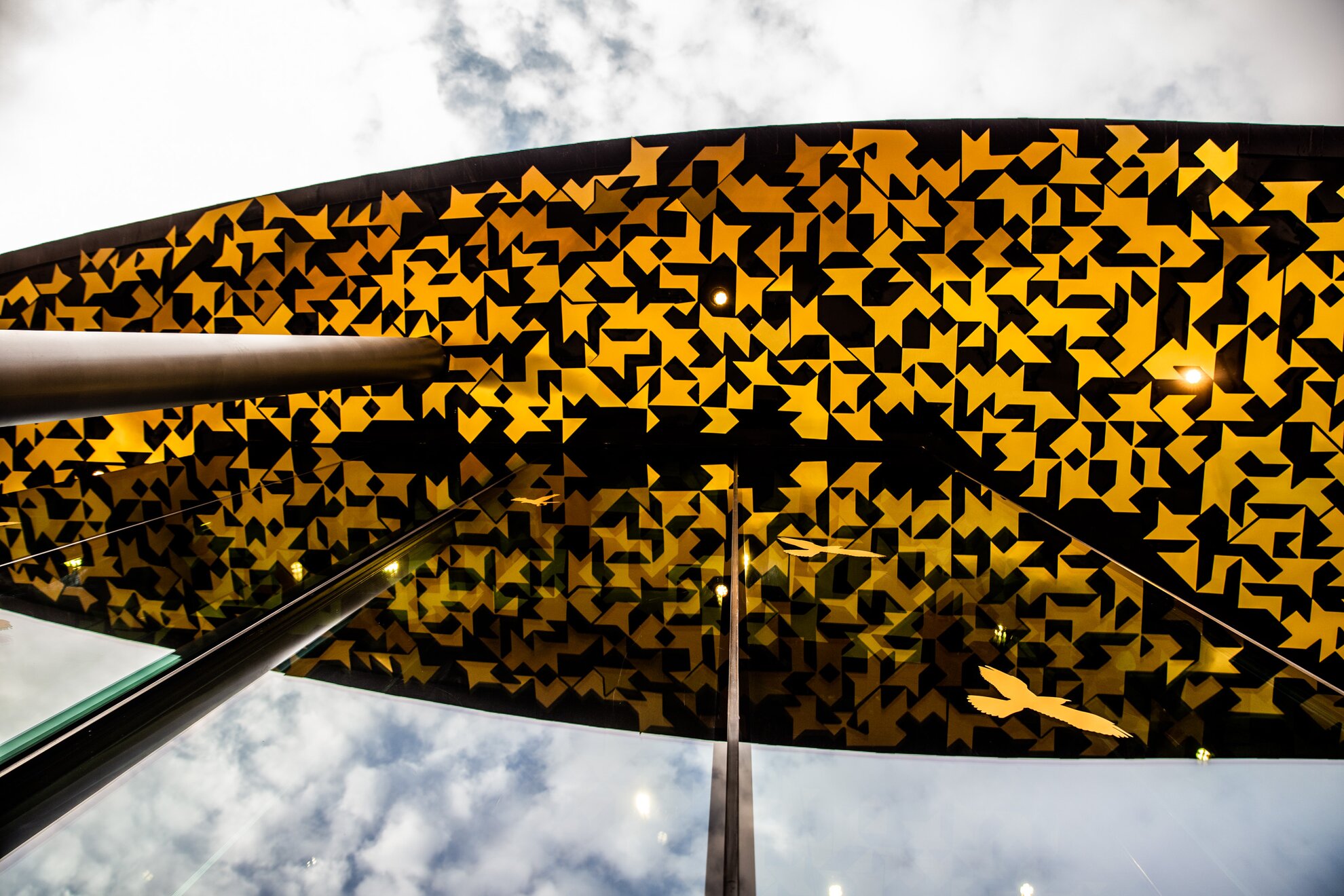
Once you enter, wherever we stand, you see a peculiar form of gold running everywhere through the suspended ceiling, many thousands of stylised leaves above. Echoing the verdant surroundings, these features were cut into shape from metal sheets by robot technology, in a manufacturing plant for car plants.
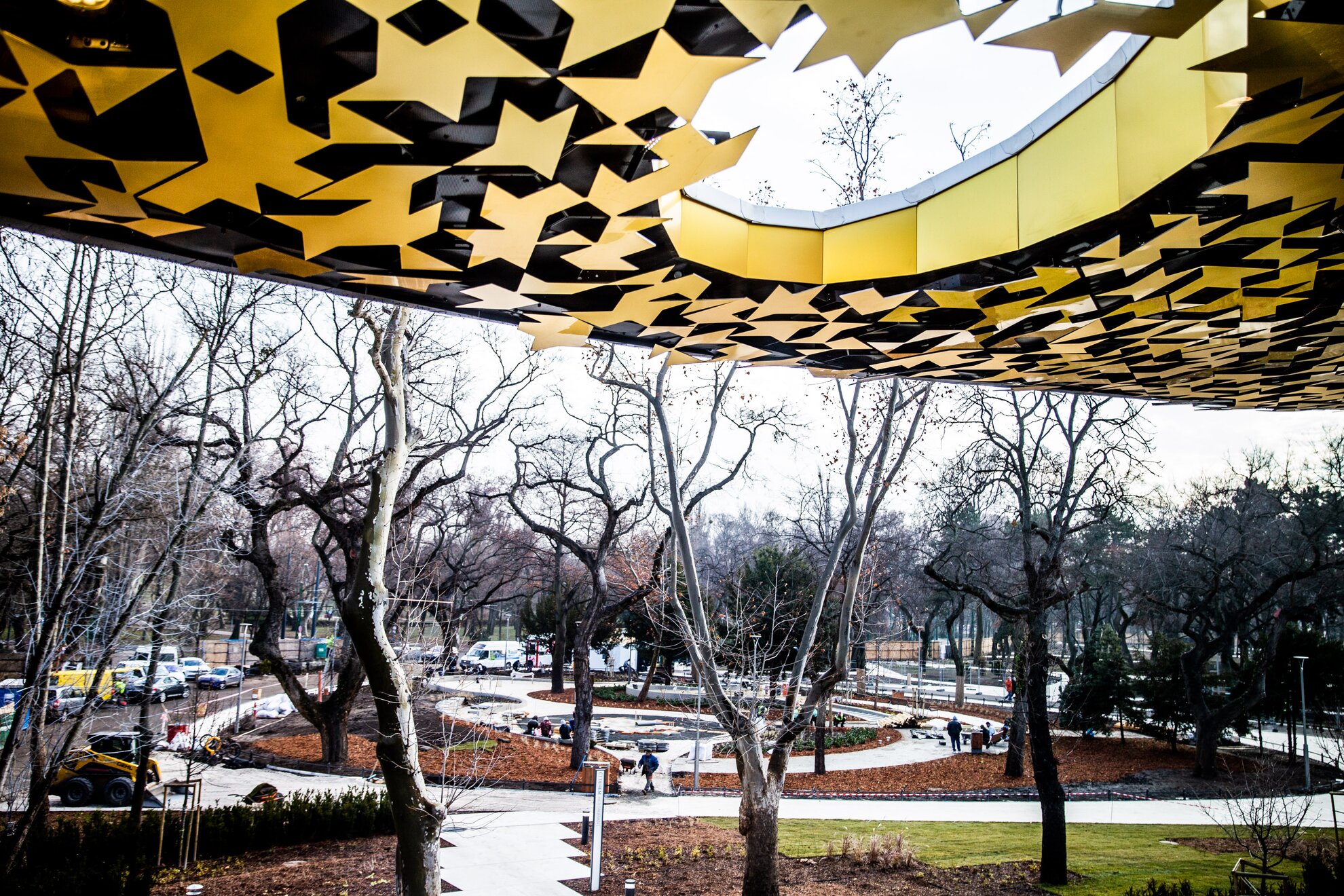
The imagination is heightened by the perforated roof, which is randomly bisected by a tree, while shafts of light burst from the roof inside the building, exciting to look at up or down at different levels.
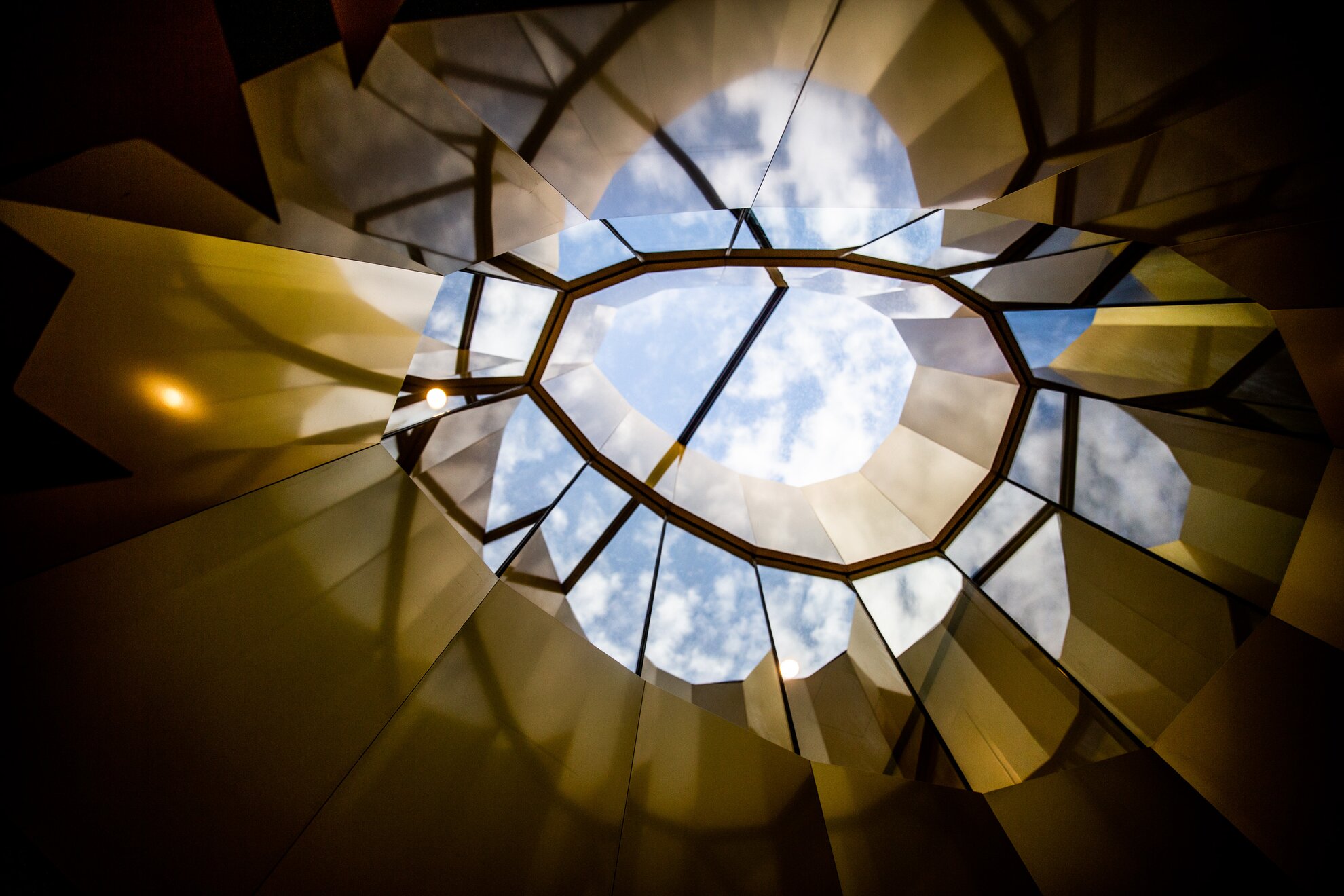
The gently floating roof can also be viewed by anyone who walks on it. This was shaped by the designer based on the visual image of sound vibrations, the sound wave.
Concert hall with brilliant acoustics
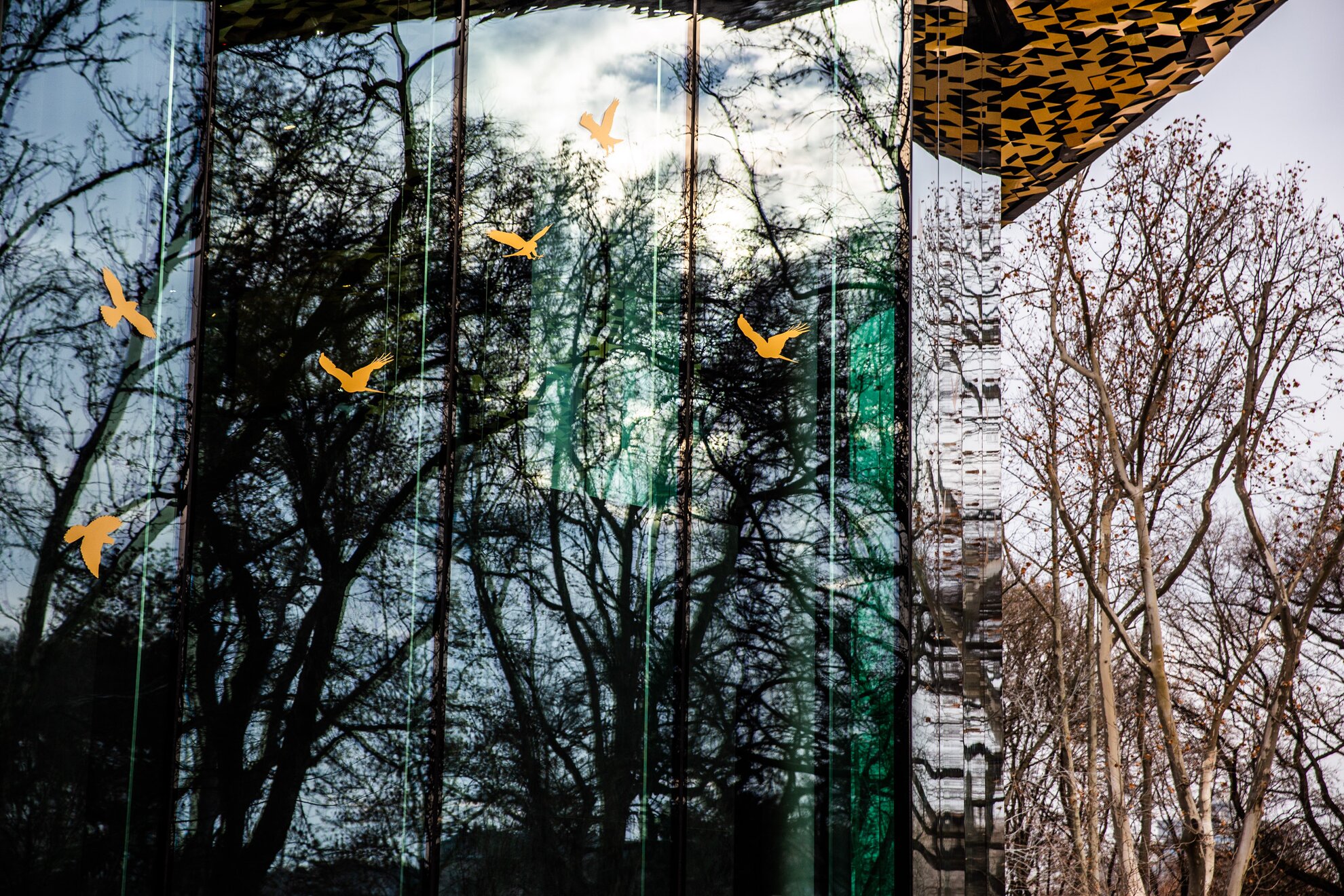
The basic concept is the
harmonious blending of nature with
the building. Once you walk
through the door, you find
yourself in an airy space
where nature has already begun to find its way. A
huge glass wall surrounds everything – standing in the 300-seat
concert hall makes you feel
being in a giant aquarium,
perhaps because of the
greenish hue of the glass.
It is rare for the wall of a concert hall
to be made of glass, and the acoustics are simply amazing. The
12-metre-high, continuous glass wall consists of 94 pieces, each of
which has been manufactured
individually.
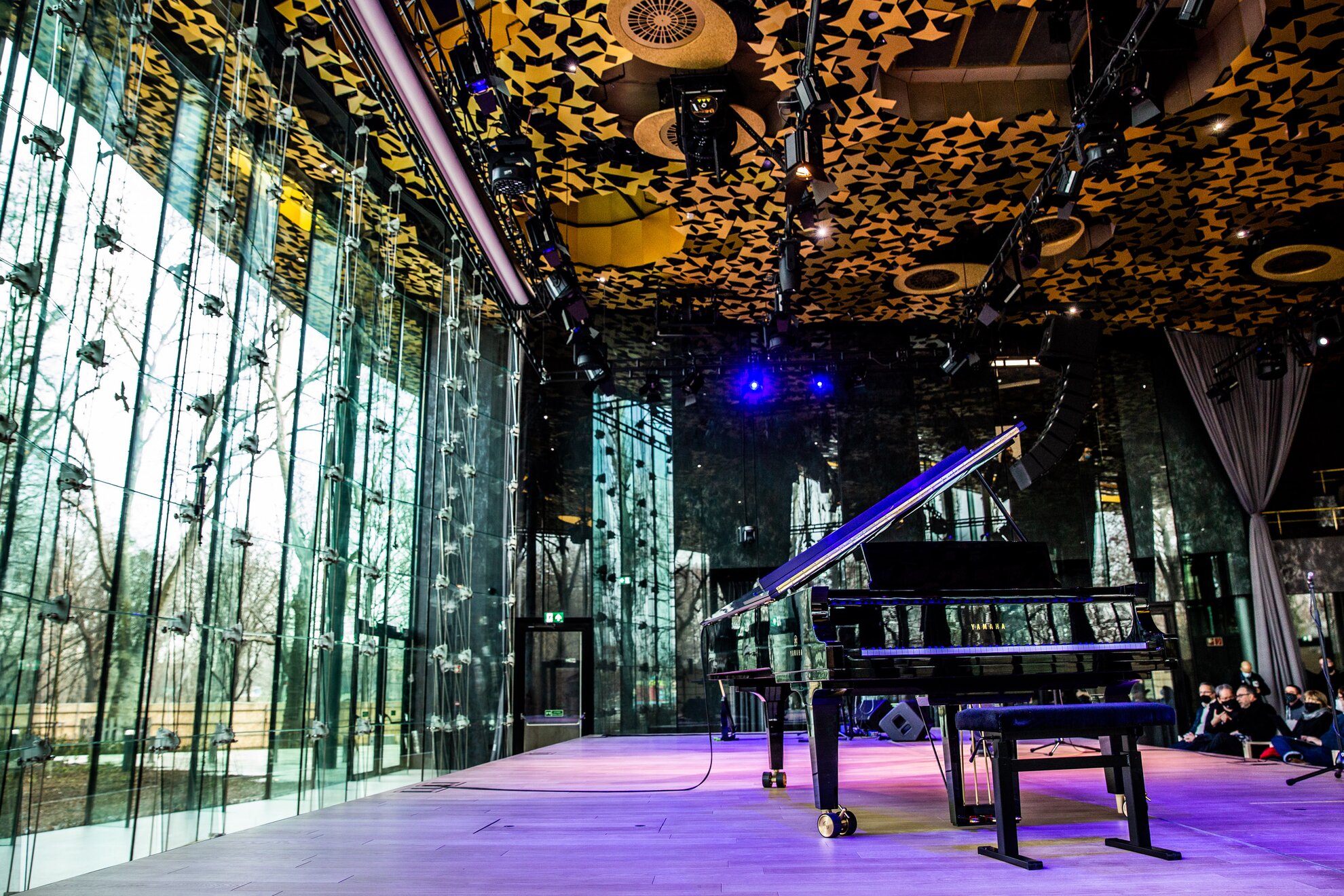
Its design and execution were much more challenging than that of any traditional concert hall. Fujimoto co-designed the hall with the Japanese acoustic company that designed the acoustics of the Elbphilharmonie concert hall in Hamburg, among others.
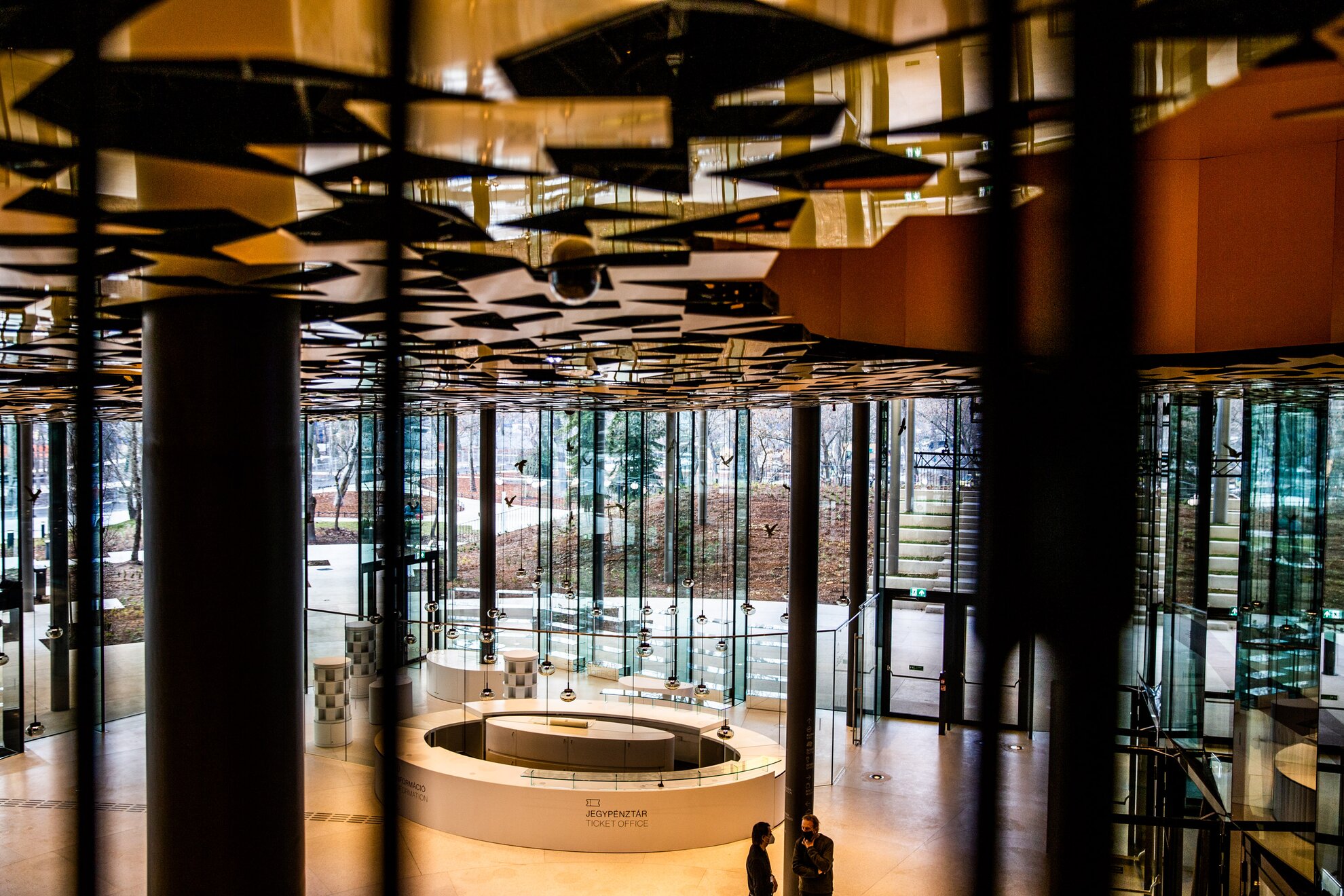
There are no continuously connected glass surfaces in the room, but zigzag walls, because this way the sound is reflected back. The resulting sound is homogeneous. It doesn't matter where you stand, the sound quality is the same. In the background rises the familiar shape of the Disneyesque Vajdahunyad Castle.
Concerts, workshops & exhibitions
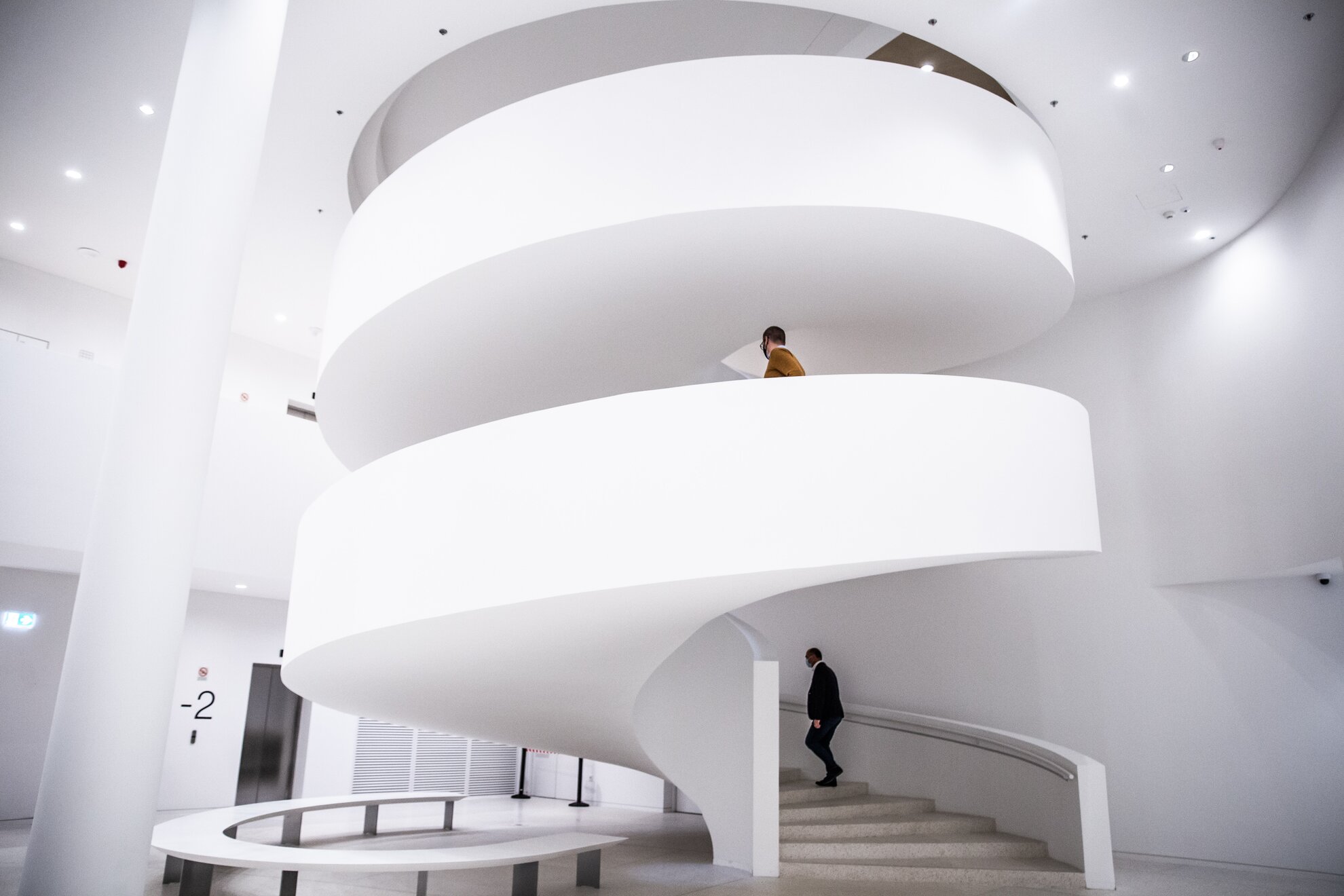
Wandering through the three levels of the Hungarian House of Music, its manifold functions were more striking than the architecture around it. This is a concert venue, educational centre and museum in one, divided according to floor. Performances take place at park level and the area for concerts has been extended outdoors, so in summer it should be a popular place for alfresco music and cocktails.
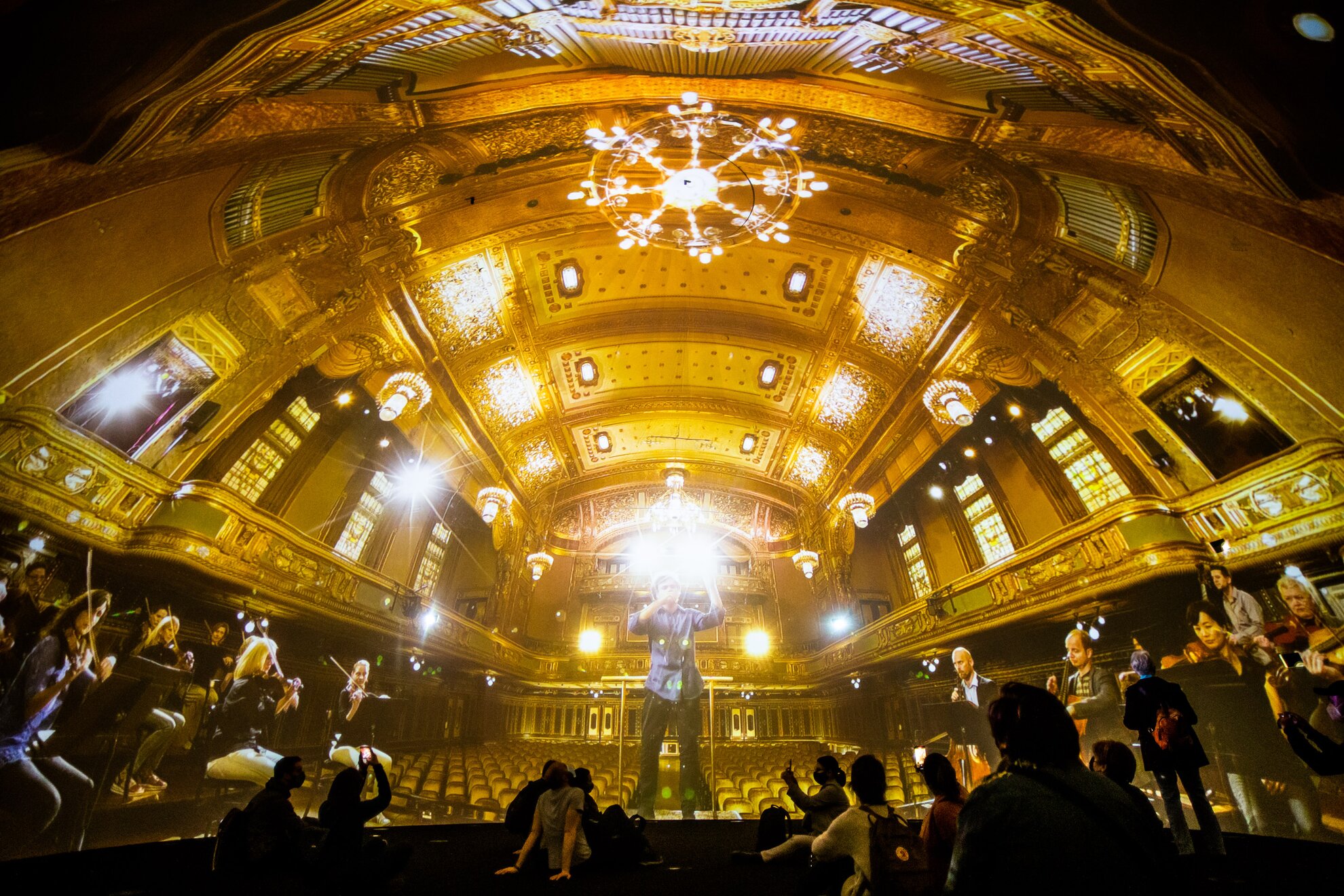
The top floor is given over to education, the bright, well-divided, sloping floor and random lighting offering relaxation, too. The underground level is even larger than the building on the surface. Here you find the permanent and temporary exhibitions, and a sound dome where you can wander from reality while sitting on bean bags or lying on the carpet. The dome-shaped space is surrounded by a giant screen but it's not just vision that matters, it's the sound emitted from more than 30 speakers.
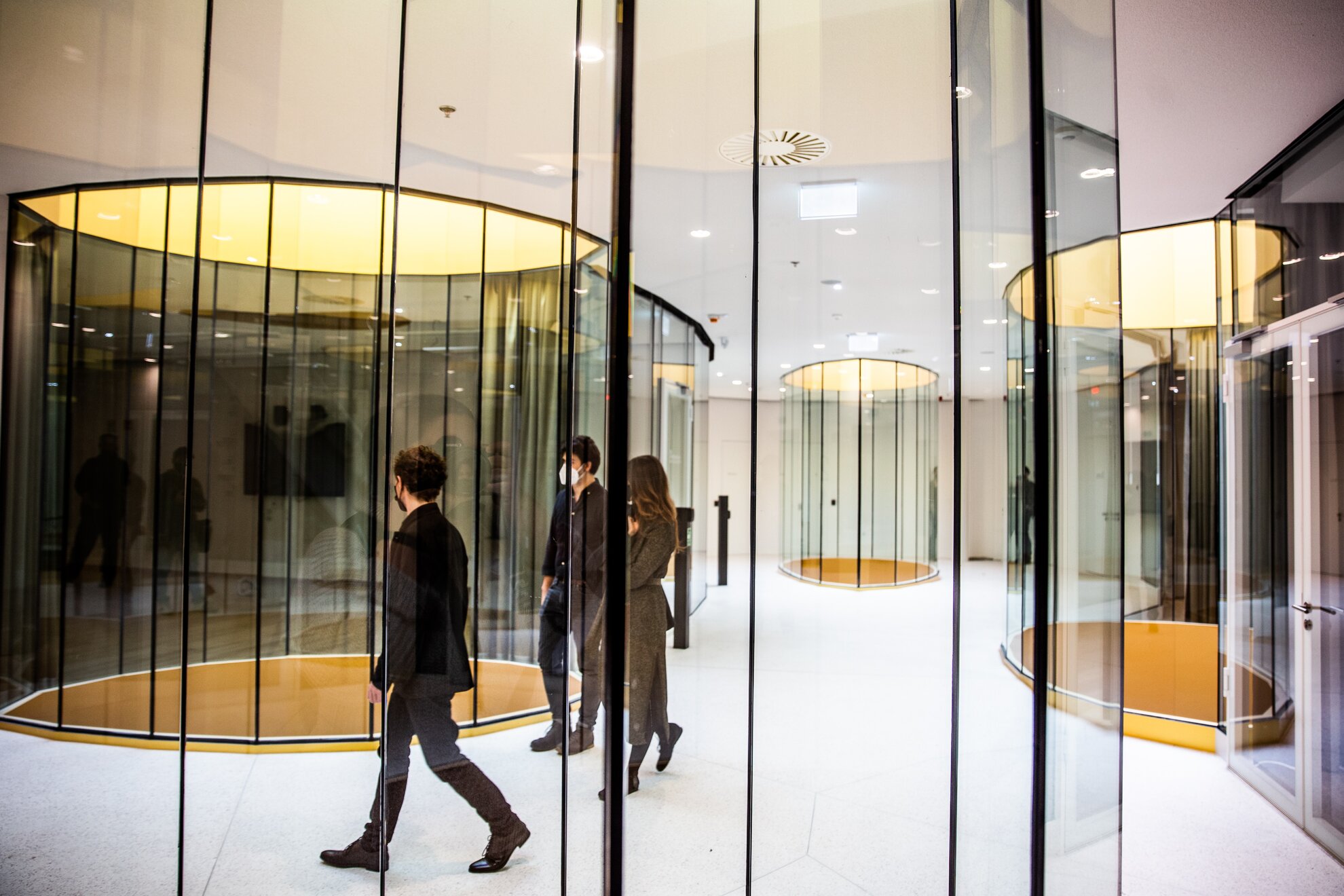
Sound and image fantasies take place in this space, but the movement of the screen also has a strong effect on your senses, making you feel like you're sitting in the middle of a spinning stage. In addition to the educational and the special audio-visual experience, this will also be a space for various musical experiments and art projects.
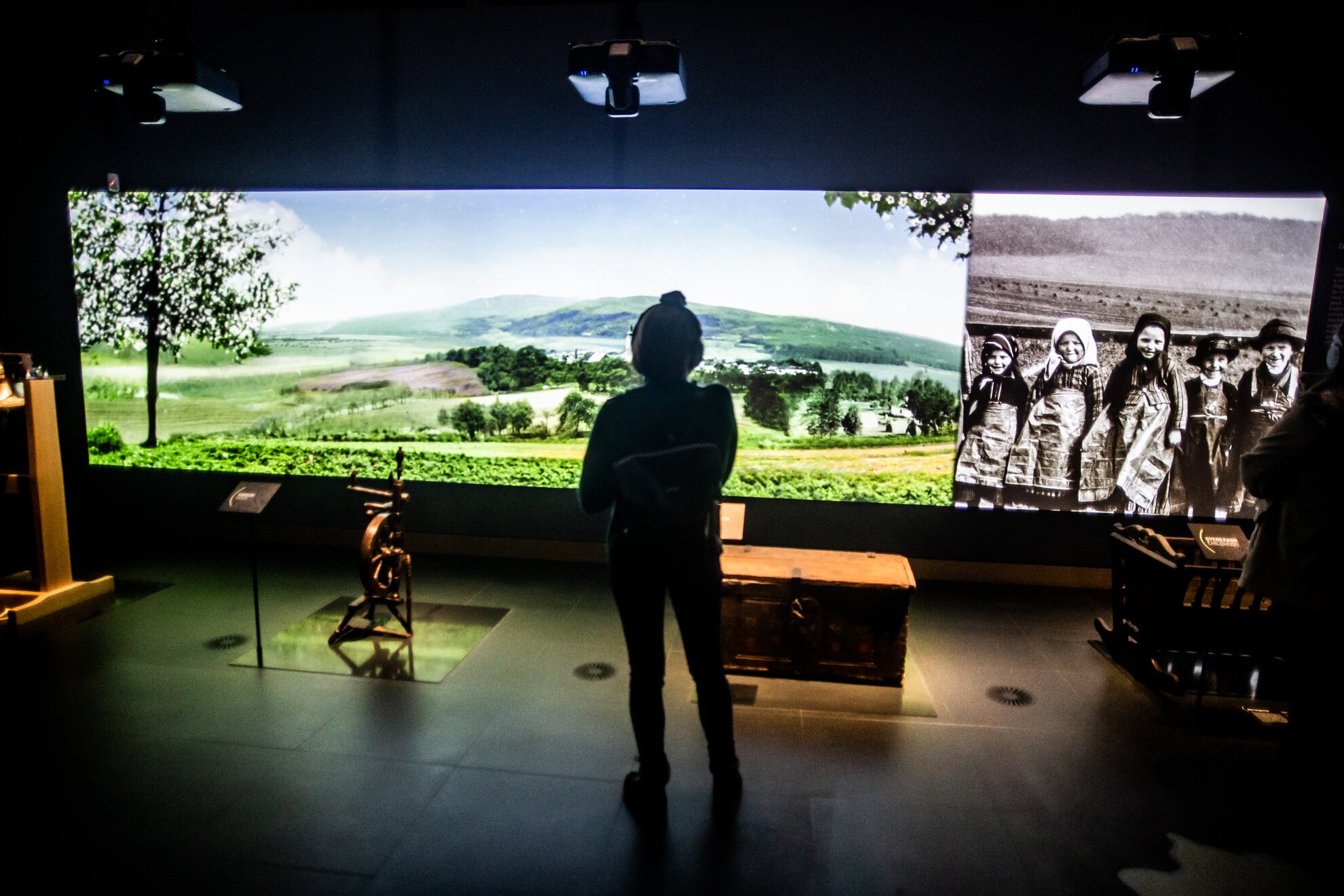
The
permanent exhibition is still under
construction, but a sneak visit revealed
a musical journey through space and
time, from a magical world to
the monumental sound of medieval cathedrals, via
folk music and the pop music of today.
It sounds relatively simple, but if you
get the chance to try the space-shaped headphones as you move around,
it's something extraordinary. When you
stand in front of a picture or step on a point, the melody in your
ears changes, and this experience brings you back to a
long forgotten childhood.
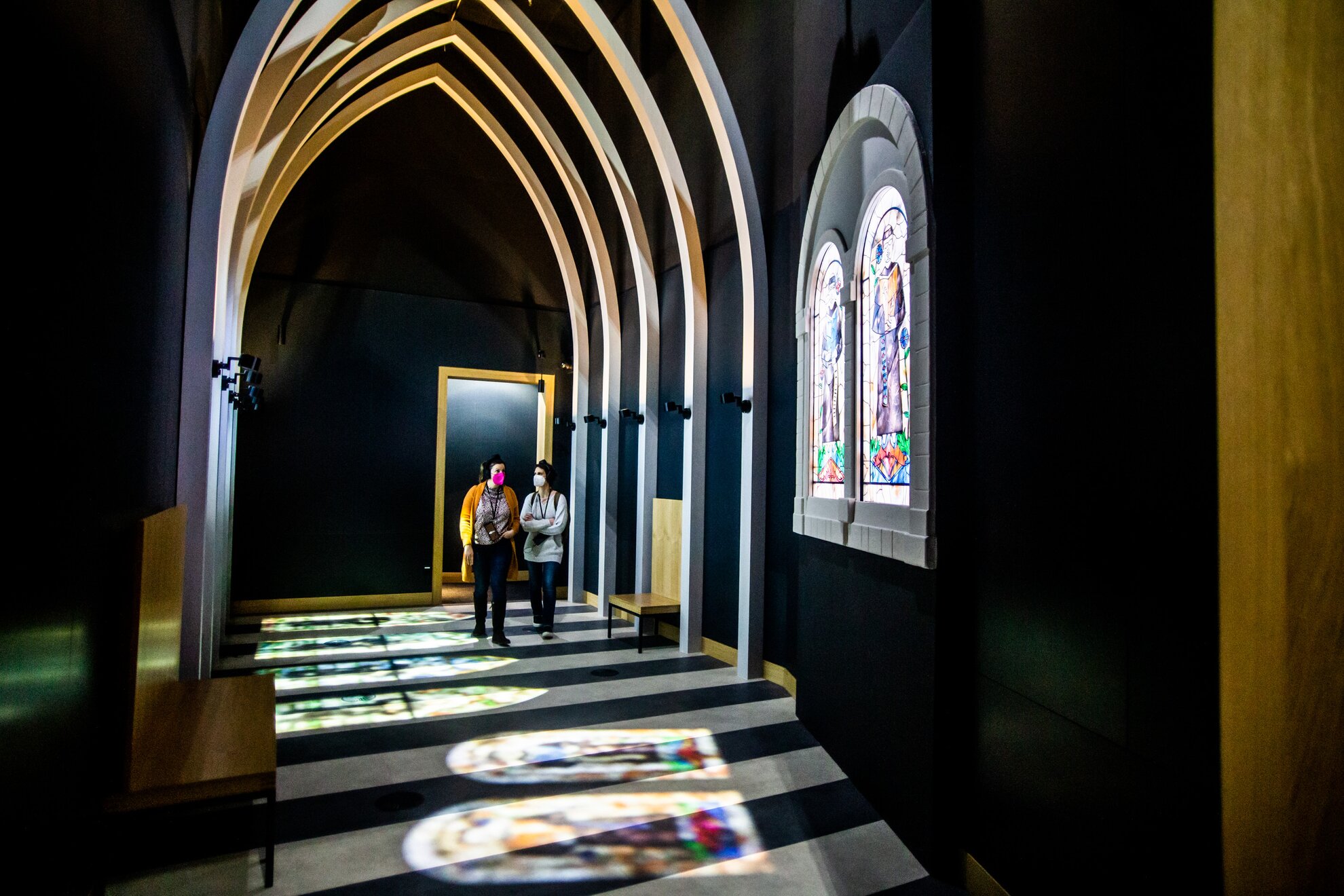
The first concerts will take place from the last weekend of January, where the discovery of communal music and special sound experiences will play a central role, alongside the music-education sessions. The complexities, the interactive exhibition and the catharsis-like acoustics, should make up for the fact that the building still awaits finishing touches.
Venue information
House of Hungarian Music
1146 Budapest, Városliget
